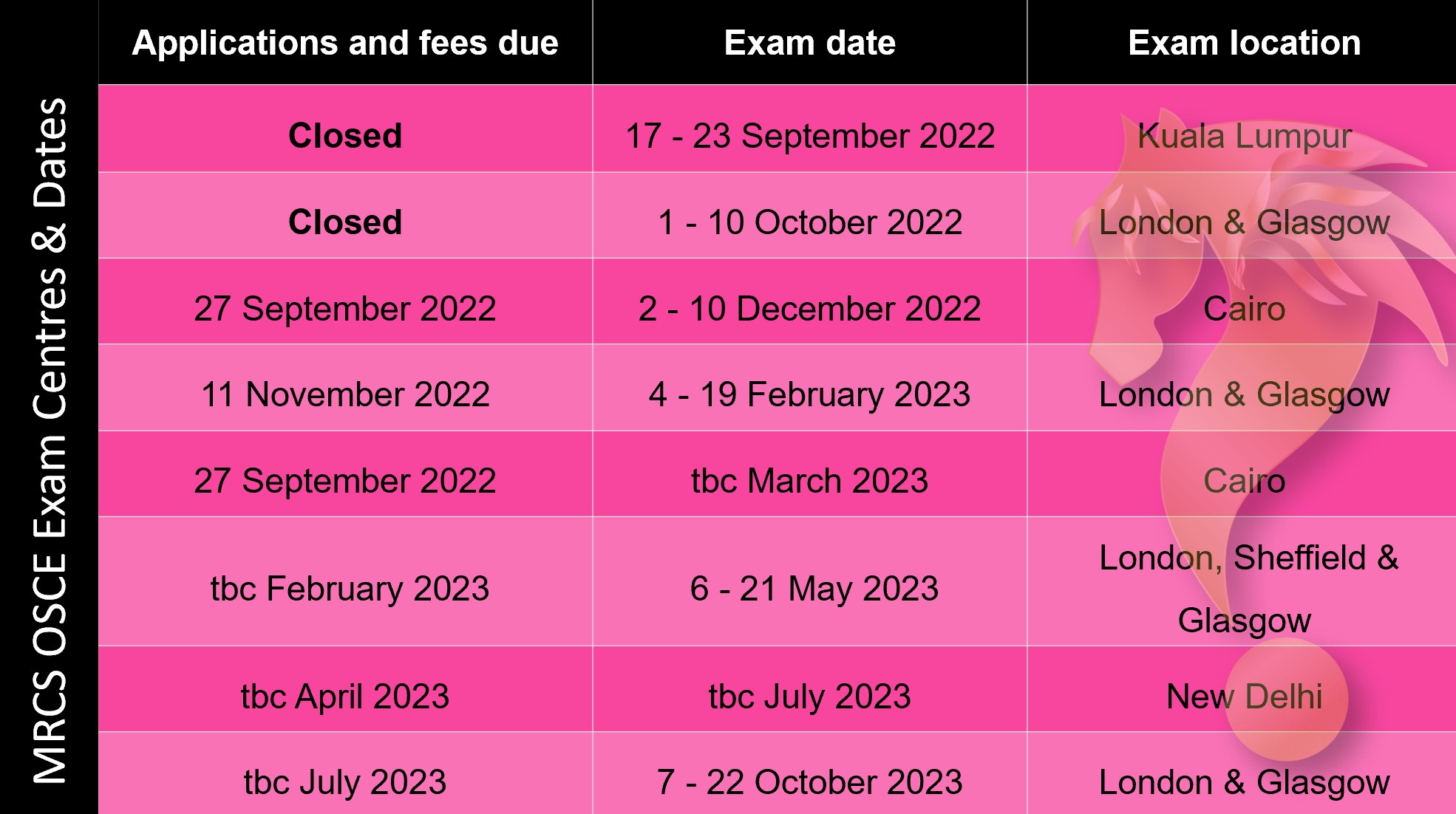Part B OSCE has an ever-changing structure since its launch, please check with the Royal College again. Generally there are about 18 – 20 OSCE stations with some real and fake patients. Exam dates for UK only released 1 month before, do not buy your air tickets/book accommodation till you get your dates. Dates may not even be in the time period that they released.
The examination goes on at a very fast pace once you have started, everything becomes instinctive. There are a variable number of stations; in some years, there were test questions (used to try out new questions) which were not counted towards your final score but you would not be told that it is a test station. Total of about 18 to 20 stations including reading stations. You will be grouped into either a morning or afternoon group. The whole exam will last about 4 hours. There is a half hour break after about 8 to 10 stations. If you are lucky enough to be on a second day for the same venue (eg Sheffield and Sheffield), you can ask your friends for the questions asked the previous day. They should repeat about 3 – 4 questions. Different venues (eg Sheffield and Edinburgh) generally do not use questions from other venues in the same month but they can ask similar questions to those of yesteryear.
The overall global pass-rate is about 60+%. The Singaporean pass-rate at all centres is obviously higher (80-90%) than the global one, with the Aug 2012 exam held in Singapore pass rate being 92%. Do not think be complacent based on the high Singapore pass-rate and go away thinking that you do not need to prepare for the exam or that Singaporeans are the most well-prepared candidates across the globe. Your overseas counterparts will have their own resources as well.
Stations
3 Anatomy stations
2 Pathology station
3 Applied science and critical care stations
2 Procedural skill stations
2 History taking stations
3 Physical examination stations
2 Communication station
2 reading stations before each communication station
